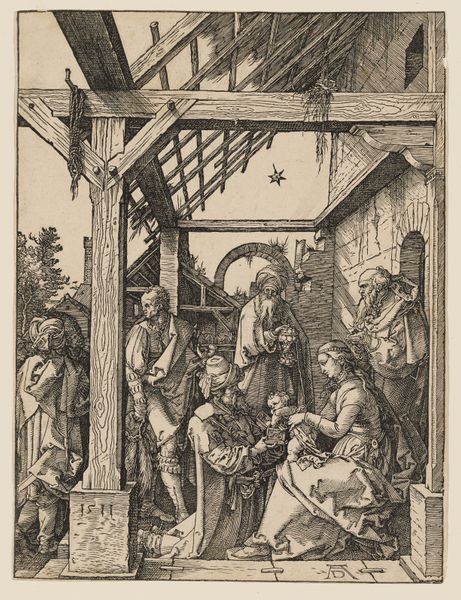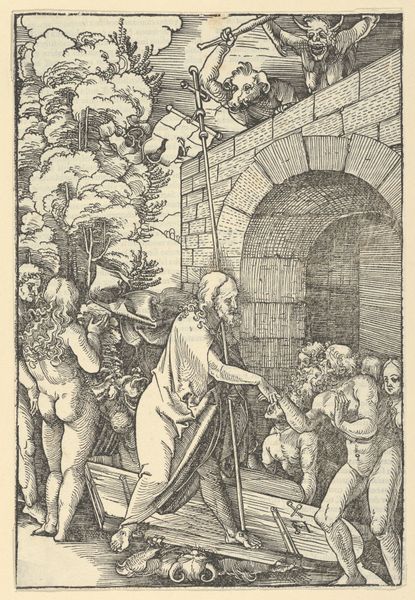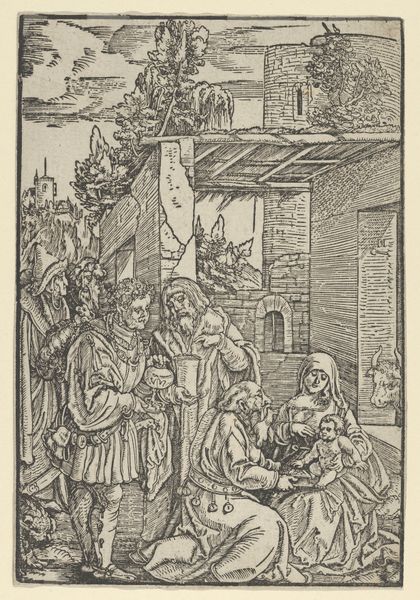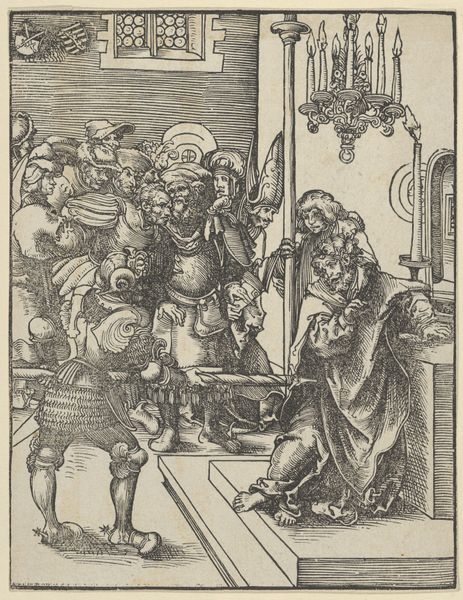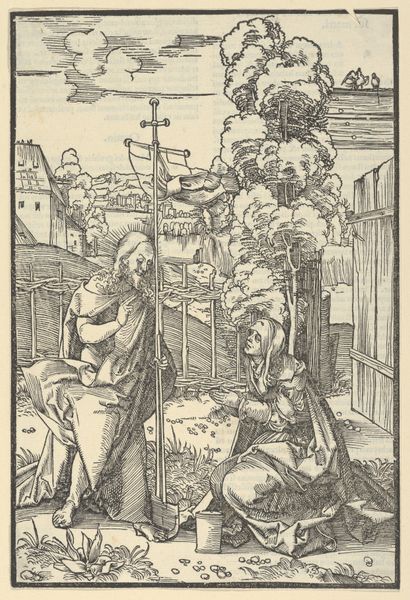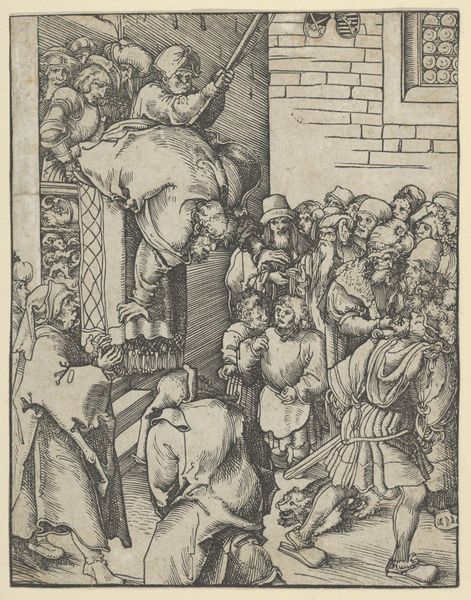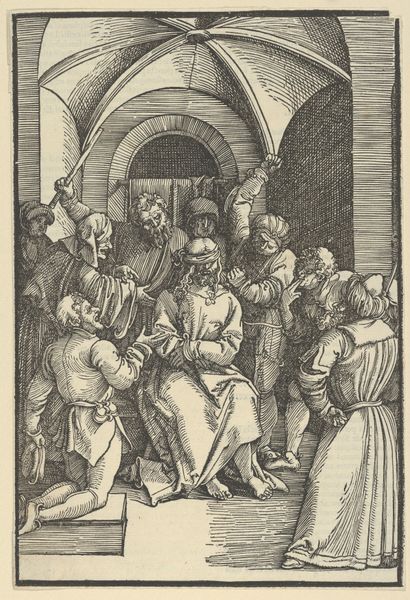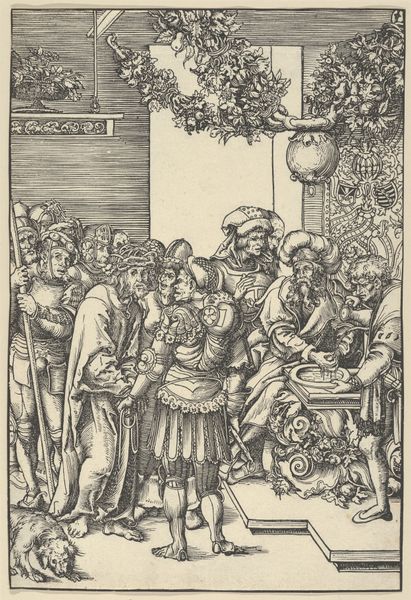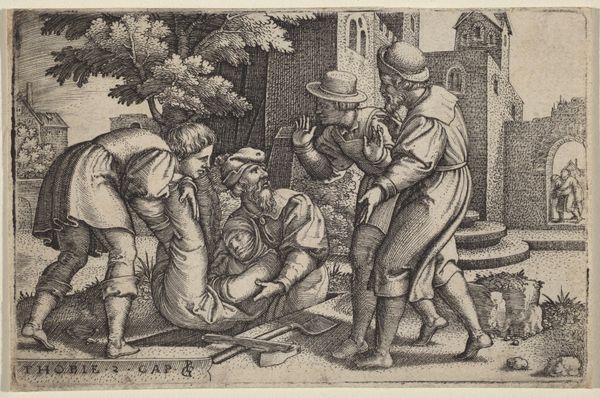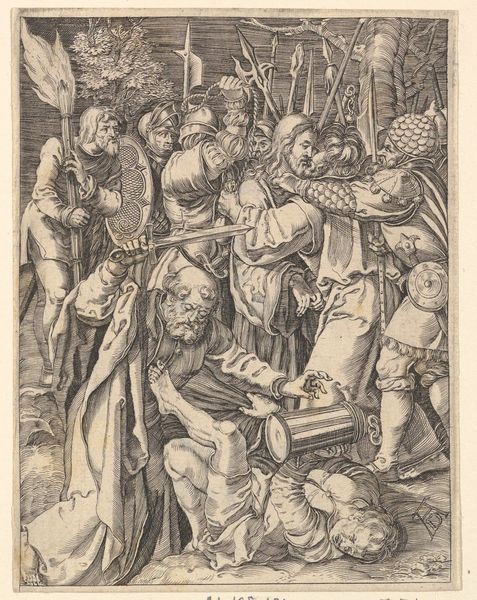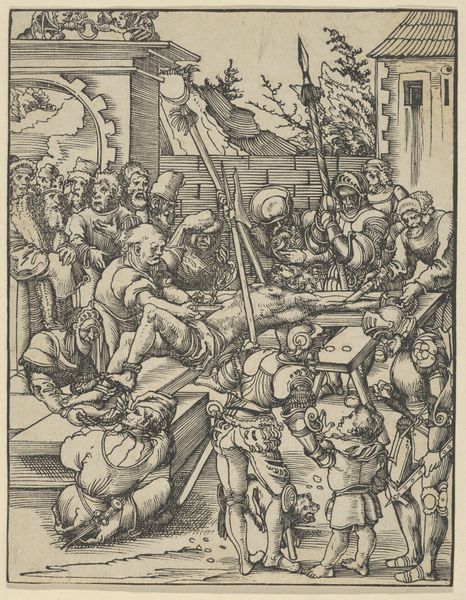
The Flagellation, from The Life of Christ 1511 - 1512
0:00
0:00
drawing, print, woodcut
#
drawing
#
narrative-art
# print
#
figuration
#
woodcut
#
men
#
history-painting
#
northern-renaissance
#
christ
Dimensions: Sheet: 9 1/8 × 6 3/16 in. (23.2 × 15.7 cm)
Copyright: Public Domain
Curator: Looking at this, I immediately feel a claustrophobic dread. The press of bodies around Christ, the stark black and white, the aggressive lines. It’s visually violent. Editor: This is "The Flagellation, from The Life of Christ" by Hans Schäufelein, created between 1511 and 1512. It’s a woodcut, currently residing at the Metropolitan Museum of Art. It’s powerful in its simplicity. The artist has presented to the masses a symbolic scene rooted deeply in European tradition. Curator: It certainly doesn't pull any punches. The column, meant to symbolize Roman authority, is also this stark, looming presence. And the faces! Such brutal expressions, caught with the precision of a snapshot but carrying all the weight of centuries of religious iconography. What function did it play? Editor: As a print, its purpose was dissemination. Remember the Reformation was just around the corner. The accessibility of printmaking allowed for the rapid spread of images and ideas to a broader public, directly influencing societal views on faith, power, and suffering. Curator: The contrast between light and shadow is so powerful, too. It emphasizes not just the physical torment but, I think, the psychological anguish. The figures enacting violence are cast in strong light, while Christ is often partially obscured. And look how he is hunched over. The curve is as if surrendering to something unavoidable and heavy, both physically and spiritually. Editor: Absolutely. Schäufelein uses familiar symbolism but twists it with a raw, almost confrontational style. The image seizes upon and amplifies themes of divine suffering that already gripped the popular imagination. The print medium here also heightens the dramatic quality, making it replicable and amplifying the effect it has on the viewer. Curator: It's a striking visual statement about human cruelty but one that also leaves you with this sense of the uncanny—like something primordial is being re-enacted, playing itself out. And will forever continue to play out. Editor: Well, reflecting on this work, one sees a powerful synthesis of art, faith, and public engagement during a tumultuous period. It serves as a reminder that art is never made or exists in isolation. Curator: I agree; this really does show how artistic imagery and collective anxieties mirror and mold one another across time.
Comments
No comments
Be the first to comment and join the conversation on the ultimate creative platform.
